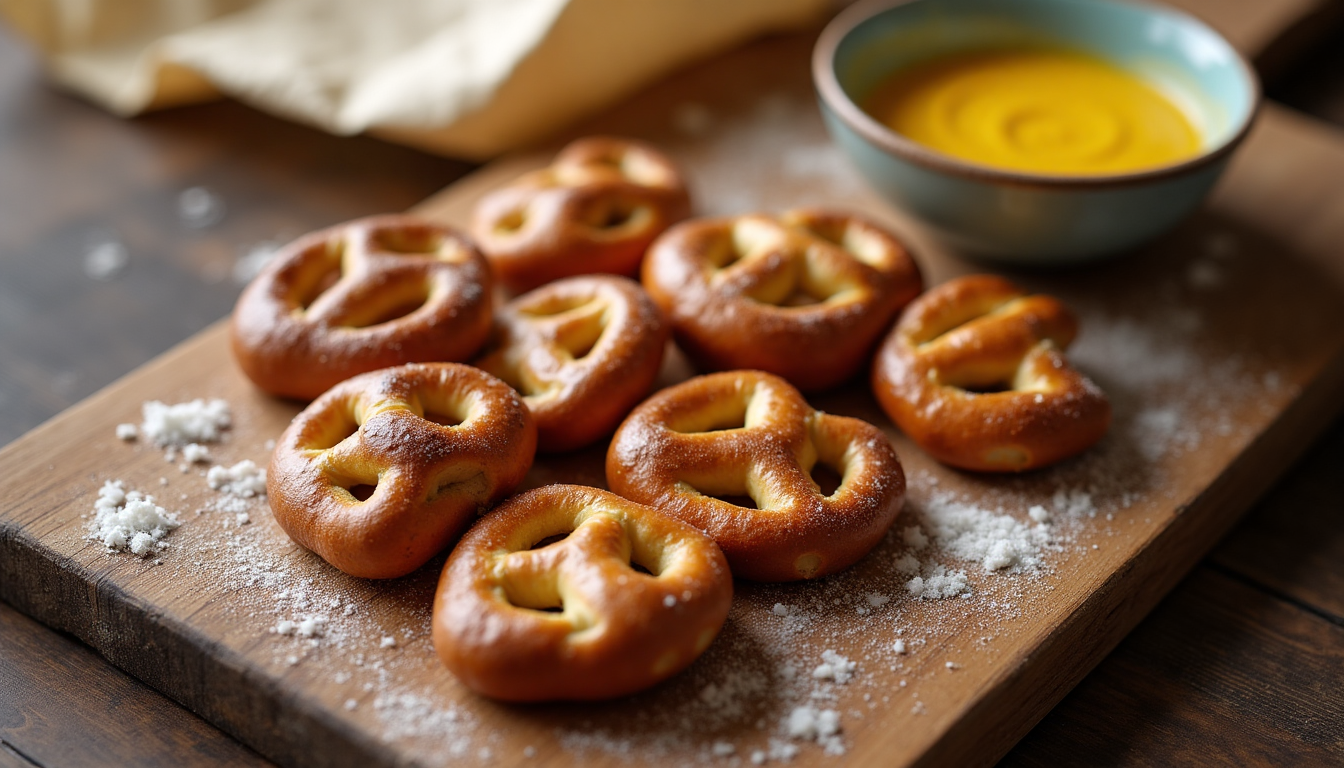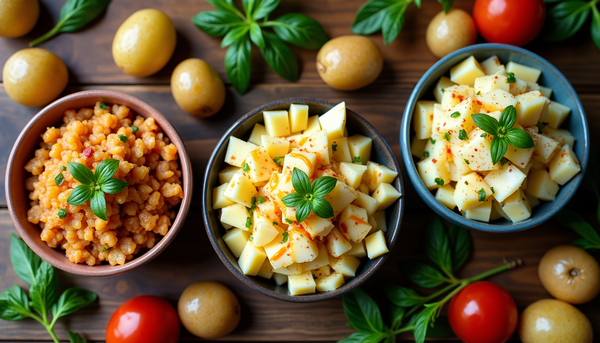Why Your Pretzel Bites Will Probably Turn Out Better Than Mine

Why Your Pretzel Bites Will Probably Turn Out Better Than Mine
Look, I'm gonna start this whole thing with a confession that might make you question why you're even reading this. The first time I tried making pretzel bites, they came out looking like sad, pale lumps that my dog wouldn't even touch. Not kidding – she literally sniffed one and walked away. That's when you know you've really messed up.
But here's the thing about pretzel bites that took me way longer to figure out than I care to admit: they're actually incredibly forgiving once you understand what's going on. Most recipe blogs will give you this pristine step-by-step process that makes it seem like one wrong move and you'll ruin everything. That's just not true, and frankly, it's kind of annoying.
The Real Talk About What You're Getting Into
First off, let's address the elephant in the room – yes, this involves yeast, and no, you don't need to be scared of it. I used to treat yeast like some temperamental diva that would throw a fit if I looked at it wrong. Turns out yeast is actually pretty chill. It wants to work. It's literally designed to make bubbles and rise, so unless you're actively trying to kill it with boiling water, you're probably fine.
The whole process takes about an hour, but here's what that actually means: maybe 20 minutes of actual hands-on work, and the rest is just waiting around while the dough does its thing. Perfect time for cleaning up (or scrolling through your phone while telling yourself you'll clean up later – no judgment here).
Why Each Step Actually Matters (Beyond "Because the Recipe Says So")
The Yeast Activation Thing
Yeah, you really do need to let the yeast foam up in that warm milk mixture. But here's why it matters: you're basically checking that your yeast is alive before you commit to mixing a whole batch of dough. Think of it as a quality control step, not just another hoop to jump through. If it doesn't foam after 5-10 minutes, your yeast is dead and no amount of wishful thinking will fix that.
The temperature thing? Anywhere between 100-115°F is fine. I've stopped obsessing with thermometers – just make it feel like a nice warm bath. Too hot and you'll kill the yeast, too cold and it'll just take longer to activate. Not the end of the world either way.
The Mysterious Baking Soda Bath
This is where most people get nervous, and honestly, I get it. Boiling a bunch of little dough pieces seems weird and potentially disastrous. But here's the science bit that actually helps: that brief dip in alkaline water (the baking soda solution) is what gives pretzels their distinctively chewy crust and deep golden color.
Without this step, you're basically making bread rolls. Which, fine, bread rolls are great, but they're not pretzels. The baking soda temporarily changes the pH of the dough's surface, and that's what creates all the magic during baking.
Pro tip I learned the hard way: use a slotted spoon or one of those spider strainers if you have it. Trying to fish out tiny dough pieces with a regular spoon is an exercise in frustration that nobody needs.
Let's Talk About Common Disasters (And Why They're Not Actually Disasters)
"My Dough Is Too Sticky"
Add more flour. Seriously, that's it. I know the recipe gives you exact measurements, but flour is weird and unpredictable. Humidity, brand differences, how you measured – all of that affects hydration. Your dough should be slightly tacky but not sticking to everything it touches.
"They Don't Look Like Perfect Little Spheres"
Good! Mine never do either, and they taste exactly the same as the Pinterest-perfect ones. The whole charm of homemade anything is that it looks, well, homemade. Embrace the wonky shapes – they've got character.
"Some Got More Golden Than Others"
Ovens aren't perfect, baking sheets conduct heat differently, and sometimes you brush egg wash more generously on some pieces than others. This is normal human cooking behavior, not a failure on your part.
The Fun Part: Making Them Your Own
Once you've made a basic batch and realized you didn't break anything, this is where it gets interesting. The recipe author mentioned all sorts of variations, but let me tell you what actually works without requiring a trip to specialty stores:
Everything Bagel Seasoning: Just dump it on top after the egg wash. Can't go wrong.
Cinnamon Sugar: Mix about 1/3 cup sugar with a tablespoon of cinnamon, brush the baked bites with melted butter, then roll them around in the mixture. Basically instant cinnamon rolls in bite form.
Cheese Stuffed: Take a small cube of sharp cheddar or mozzarella, wrap the dough around it, pinch to seal. Some cheese will probably leak out during baking. This is fine and actually makes them look more rustic.
Garlic Parmesan: Mix some garlic powder into melted butter, brush it on after baking, then hit them with grated parmesan. Simple but makes people think you're fancy.
Pairing These Things With Actual Life
Look, the recipe suggests all these elaborate dipping sauces, and sure, beer cheese dip is fantastic if you're going full game-day mode. But honestly? These are great with basic yellow mustard from a squeeze bottle. Or ranch. Or just eaten plain while standing in your kitchen at 9 PM wondering why you decided to bake something on a Tuesday.
If you want to get a little fancy without much effort, cream cheese mixed with a packet of onion soup mix makes an excellent dip. Takes five minutes and people act like you're some kind of culinary genius.
The Part Where I Tell You to Actually Try This
Here's my challenge to you: make these without stressing about perfection. Don't worry if your dough ropes aren't exactly 3/4 inch thick. Don't panic if some bites are bigger than others. Don't try to make them look like they belong in a magazine.
Just focus on the process – the satisfying work of kneading dough, the small triumph of watching yeast foam up, the weirdly meditative nature of rolling out little pieces. This is the kind of cooking that actually relaxes you once you stop trying to nail every detail.
And when they come out of the oven smelling like a mall pretzel stand? That's when you'll understand why people get excited about baking bread. It's not about achieving some impossible standard – it's about creating something warm and comforting with your own hands.
Plus, even if they're not perfect, they'll still disappear faster than you'd expect. Trust me on this one.
So what do you say? Ready to make some imperfect, delicious pretzel bites? Your kitchen (and your dog) will thank you.




